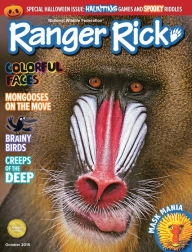Article Summary for Kids

There are lots of incredible science magazines for kids, like Ranger Rick and National Geographic Kids . Journalists take science news and develop stories that younger kids would be interested in. The stories often include bright colors and amazing images to hook younger readers on science. Do you think you could write an article like this?
For this assignment, you will read a scientific article or journal and then attempt to rewrite it for a younger audience. The goal is to dissect the article for its main themes, select specific evidence and details, and then rebuild it in a way that a younger person would understand. Like a summary, it tasks you with showing you have developed a deep understanding of the topic or the concepts.
Step 1: Read and annotate an article, you may also be discussing this article in class.
Step 2: Determine the main point or the main theme. This becomes the central point of your rewrite.
Step 3: Do not copy the article verbatim, pick details that support the main theme and write them in a way that would be understandable for a younger person (8th grade is your target)
Step 4: You may want to organize your article into sections. Readings for young students are usually split into sections with bold (big) headings to point to the section’s main ideas. Your original article may already have these types of sections which you could reduce and retitle.
Step 5: Replace any difficult or science specific terms with words that could be understood by the age group you are writing for. You may also choose to add diagrams or images that may help with understanding.
Step 6: Check for overall coherence and readability. If you have a younger person in the house, have them proofread it for you!
Grading Rubric
Introduction: Title is relevant, central theme (thesis) present, includes interesting details to grab reader’s attention ____ 3 ___ 2 ____1
Supporting details: Details support and provide information related to the thesis. ___ 3 __ 2 ___1
Terms and Definitions: Complicated words have been simplified for the audience, illustrations may have been used. ____ 3 ___ 2 ____1
Organization: Headings/Sections are used to improve the flow of article ___ 3 ___ 2 ____1
Conclusion: Thesis is restated, additional summary or questions for thought included ___ 3 ___ 2 ___1
Other Resources on Analyzing Scientific Texts
Analyze an Article from a Scientific Journal